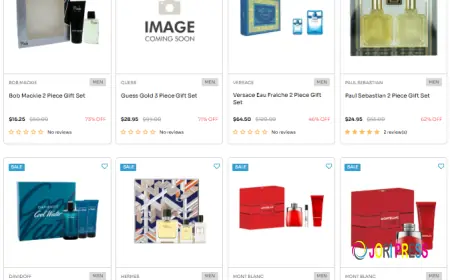Indonesia Motor Insurance Market 2030 Future Trends
Also, government infrastructure projects and urbanization in Indonesia have contributed to the growing need for commercial vehicles.

The Indonesia Motor Insurance Market is on a steady path of expansion, reflecting the country's evolving socio-economic dynamics, increased vehicle ownership, and heightened public awareness of insurance benefits. According to recent market insights, the motor insurance industry in Indonesia was valued at USD 1.61 billion in 2024 and is projected to reach USD 1.98 billion by 2030, growing at a CAGR of 5.98%. This optimistic growth trajectory is underpinned by several key trends, drivers, and strategic shifts within the insurance ecosystem.
Emerging Trends in the Indonesia Motor Insurance Market
One of the most significant trends reshaping the Indonesian motor insurance landscape is the digital transformation of the industry. The rapid rise of digital platforms, fueled by increased internet penetration and smartphone usage, has shifted consumer behavior. Policyholders now seek convenience, quick service, and transparency—all of which digital channels provide. Insurance companies are responding by investing heavily in InsurTech innovations, mobile apps, and AI-powered customer service tools.
Another trend is the growing popularity of usage-based insurance (UBI). With telematics devices and data analytics becoming more accessible, insurers can now offer customized premiums based on driving behavior. This not only appeals to safety-conscious drivers but also creates a more equitable pricing model.
Furthermore, environmental sustainability and green driving are gaining traction. As electric vehicle (EV) adoption grows in Indonesia, insurers are beginning to tailor specific policies for EV owners, reflecting different risk profiles and maintenance needs. This shift supports Indonesia's broader national agenda for cleaner transportation alternatives.
Download Free Sample Report: https://www.techsciresearch.com/sample-report.aspx?cid=27257
Market Drivers: Factors Fueling the Motor Insurance Boom
1. Rising Disposable Income
Indonesia's growing economy has resulted in increased disposable income, particularly among the expanding middle class. As families achieve greater financial stability, vehicle ownership rates rise, thereby increasing the need for motor insurance. More consumers are opting for comprehensive policies rather than just third-party liability coverage, reflecting a growing awareness of asset protection.
2. Surge in Motorcycle Sales
Motorcycles remain the most common mode of transportation in Indonesia, especially in urban and semi-urban areas. With their affordability, fuel efficiency, and agility in congested traffic, motorcycles are in high demand. The growth in motorcycle sales is mirrored by a corresponding spike in demand for two-wheeler insurance policies.
3. Expansion of Ride-Hailing Services
The booming ride-hailing economy, supported by platforms like Gojek and Grab, has contributed to the increased use of motorcycles and cars. Many of these vehicles require comprehensive insurance policies, further fueling market growth. Insurers are creating special packages to cater to drivers and fleet owners operating under these platforms.
4. Government Support and Regulation
The Indonesian government has made motor insurance mandatory for all vehicles by introducing third-party liability regulations. It also continues to promote financial literacy and awareness campaigns, pushing consumers to understand the importance of insurance. These initiatives create a fertile environment for insurance providers.
5. Infrastructure and Urbanization
Infrastructure development in regions like Central Indonesia is leading to more vehicles on the road. As urban centers expand, traffic density increases, boosting the need for insurance coverage against accidents, theft, and third-party damages.
Industry Key Highlights
- The market stood at USD 1.61 billion in 2024, expected to reach USD 1.98 billion by 2030.
- CAGR during the forecast period is projected at 5.98%.
- Motorcycles dominate the vehicle insurance category due to affordability and traffic efficiency.
- Online distribution channels are the fastest-growing segment.
- Central Indonesia is leading in regional growth, driven by urbanization.
- Increased investment in digital insurance platforms and mobile apps.
- Usage-based insurance and electric vehicle coverage gaining momentum.
- Strong government policies supporting insurance adoption.
- Rising penetration in rural markets with improved infrastructure.
- Customized policies now available for ride-hailing drivers and fleet owners.
Market Segmentation Overview
By Insurance Type:
- Third Party Liability
- Comprehensive
By Distribution Channel:
- Agents/Brokers
- Banks
- Online
- Others
By Region:
- Central Indonesia (fastest-growing)
- Western Indonesia
- Eastern Indonesia
Competitive Analysis
The Indonesian motor insurance market is characterized by a healthy mix of established multinational players and local insurance providers. The competition is intensifying with digital disruptors entering the fray and creating innovative, customer-centric solutions.
Leading Players Include:
- PT Asuransi MSIG Indonesia – Offers a robust suite of personal and commercial motor insurance policies with digital servicing capabilities.
- PT Sompo Insurance Indonesia – Known for its innovation in motor and property insurance.
- Insureka – A digital-first insurance platform catering to younger, tech-savvy consumers.
- PT Zurich Asuransi Indonesia, Tbk – Provides global expertise with a local presence.
- Allianz SE – A strong player offering tailored packages for fleet owners.
- Great Eastern Holdings Limited – Focuses on motor and life insurance segments.
- PT Asuransi Bina Dana Arta Tbk – Offers competitive premiums and flexible plans.
- PT. Asuransi Sahabat Artha Proteksi (Sahabat Insurance) – Caters to lower-income and rural segments.
- The Falcon Insurance Public Company Limited – Expanding its footprint with digital offerings.
- American International Group, Inc. (AIG) – Offers premium coverage options for high-value vehicles.
These companies are investing in digital transformation, customer service enhancement, and regional expansion strategies to strengthen their market positions.
Future Outlook
Looking ahead to 2030, the Indonesian motor insurance market is poised for transformative growth. Several macroeconomic and technological factors will shape this trajectory:
- Increased EV Adoption: As government incentives and environmental concerns rise, EV ownership will expand, leading to a new category of insurance products.
- InsurTech Partnerships: Collaborations between traditional insurers and technology firms will streamline claims processing, fraud detection, and customer onboarding.
- AI and Big Data: Insurers will increasingly utilize AI algorithms and big data analytics to refine underwriting models, reduce risks, and personalize premium structures.
- Expanding into Untapped Markets: Rural and remote regions present an enormous growth opportunity as digital infrastructure improves and awareness increases.
- Microinsurance Products: Targeting low-income groups with bite-sized, affordable insurance offerings could enhance financial inclusion.
- Regulatory Evolution: Continued regulatory enhancements will likely favor both consumers and insurers, improving trust and transparency.
The overall outlook remains highly positive, with an expanding consumer base, technological advancement, and supportive policy frameworks creating a robust foundation for future growth.
10 Benefits of the Research Report
- Accurate Market Forecasts: Provides reliable projections up to 2030.
- Strategic Insights: Helps insurers identify growth opportunities and potential risks.
- Detailed Segmentation: Offers granular insights by region, insurance type, and distribution channel.
- Emerging Trends Analysis: Spotlights current and future market-shaping trends.
- Competitive Benchmarking: Allows comparison of key players and their strategies.
- Investment Guidance: Supports decision-making for investors and stakeholders.
- Policy Implications: Evaluates regulatory influence on market dynamics.
- Consumer Behavior Insights: Examines changing consumer preferences and demands.
- Technological Outlook: Highlights role of digitalization and InsurTech.
- Customized Data Options: Offers flexibility with optional custom data requests.
Conclusion
The Indonesia Motor Insurance Market is entering a new era of growth and innovation. With strong economic fundamentals, digital adoption, government support, and increasing consumer awareness, the industry is well-positioned to meet the demands of a rapidly modernizing population. Companies that can innovate, personalize offerings, and expand their digital footprints will be the front-runners in this dynamic landscape. As we approach 2030, the market will not only grow in size but also in sophistication, evolving to meet the complex needs of Indonesia’s diverse vehicle-owning population.
Contact Us-
Mr. Ken Mathews
708 Third Avenue,
Manhattan, NY,
New York – 10017
Tel: +1-646-360-1656
Email: [email protected]
Website: www.techsciresearch.com
What's Your Reaction?
 Like
0
Like
0
 Dislike
0
Dislike
0
 Love
0
Love
0
 Funny
0
Funny
0
 Angry
0
Angry
0
 Sad
0
Sad
0
 Wow
0
Wow
0



















































